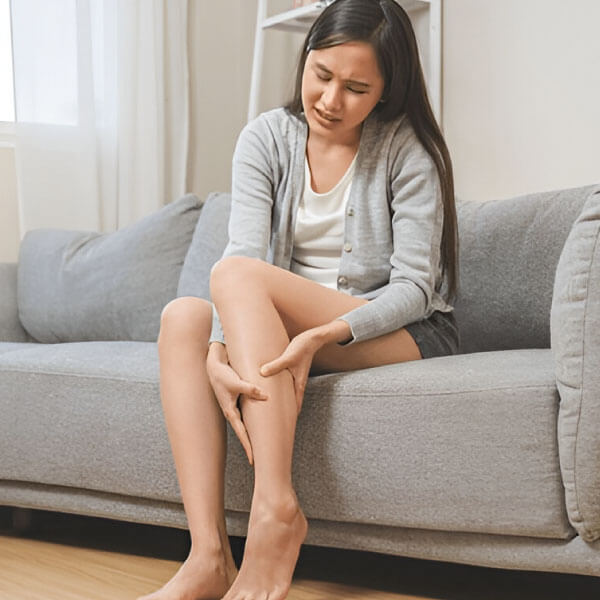
Endometriosis happens when tissue like the lining of the uterus grows outside the uterus. This can cause pain and swelling. If you need support or products to feel more comfortable, visit our DOXXES store on Westheimer/Dairy Ashford for guidance and helpful tools.
What Is Endometriosis
Endometriosis is a condition where tissue similar to the uterine lining grows on areas like the ovaries, fallopian tubes, or pelvic lining.
There are different types:
- Superficial peritoneal: near the surface of the pelvic cavity
- Deep infiltrating: grows deeper into organs or tissues
- Ovarian lesions: affects the ovaries
Each type may cause different symptoms and levels of pain.
Why Does Endometriosis Happen?
Emotional and mental factors that can increase pain:
- Long-term stress or anxiety
- Past trauma or abuse
- Conflict in relationships
Physical factors often linked to endometriosis:
- Pelvic infections or chronic inflammation
- Hormone imbalance, especially high estrogen
- Tight pelvic floor muscles
- Body structure issues, like a tilted uterus or scar tissue
Often, more than one cause works together to trigger symptoms.
Examples and Trigger-Finding Steps
Real examples:
- A teen who feels strong cramps before every period
- An athlete who feels tightness or pain during workouts
- A person who has pain during bowel movements
- Someone whose back pain gets worse before their period
How to find what triggers your pain:
- Use a journal to track your pain and emotions
- Notice patterns—does pain get worse after exercise, certain foods, or stress?
- Try changing lubricants, massage routines, or sexual positions to see what helps
Who It Affects and Gender Differences
Endometriosis mostly affects people with uteruses—this includes cisgender women, trans men, and nonbinary individuals. But it can also affect their partners. The condition may cause sadness, stress in relationships, or a drop in self-esteem.
For people assigned female at birth, common symptoms include pelvic pain, fatigue, and painful periods. Partners may feel unsure how to help or worry about causing more pain during intimacy.
How a Sex Therapist Can Help
A sex therapist can:
- Talk through your sexual history, including issues like “painful abdomen after intercourse”
- Check for emotional concerns like anxiety, sadness, or trauma
- Teach ways to manage pain and build better communication
- Offer tips to reduce vaginal pain and make intimacy more comfortable
Ways to Treat and Cope with Endometriosis
Helpful steps include:
- Counseling and therapy: talking to a professional can help with stress, pain, and relationship challenges
- Medical treatment: in some cases, surgery may be an option. Always talk to your doctor about possible risks, including the chance of pain coming back after a hysterectomy

How Doxxes.love Can Help
At Doxxes.love, we offer:
- Water-based lubricants made for sensitive skin
- Pelvic floor tools to relax tight muscles
- Gentle vibrators that help with pain relief
- Prostate massagers that support the pelvic area
Each item includes simple, clear instructions. When used with therapy, these tools may help you feel better and improve intimacy.
Talking About Endometriosis with Others
Tips for better communication:
- Share your feelings clearly: “I feel worried when pain happens”
- Use “I” statements to avoid sounding like you’re blaming someone
- Talk in a private, calm setting
- Read trusted sources together and learn as a team
- If pain or stress increases, seek help from a professional early
Visit Our DOXXES Store on Westheimer/Dairy Ashford
Our store is welcoming and private. Come in to explore products, get answers, and receive kind, in-person guidance to help you on your journey.
Conclusion
Living with endometriosis can be hard—but support, communication, and the right tools can help. Visit DOXXES on Westheimer/Dairy Ashford for expert help and products that can make a real difference in your comfort and care.
FAQs
- What is endometriosis?
Endometriosis is when tissue like the uterine lining grows outside the uterus. It can cause pain, swelling, and period problems. - What are the symptoms of endometriosis?
Common symptoms include pelvic pain, heavy periods, back pain, pain during sex, and fatigue. - Can endometriosis affect daily life?
Yes. It can make work, exercise, relationships, and intimacy more difficult, especially during flare-ups. - What causes endometriosis?
The exact cause isn’t known, but hormone imbalance, inflammation, pelvic infections, and genetics may play a role. - How is endometriosis diagnosed?
Doctors may use pelvic exams, ultrasounds, or laparoscopy (a small surgery) to confirm endometriosis. - Can endometriosis come back after treatment?
Yes. Even after surgery like a hysterectomy, pain may return. Ongoing care and therapy often help long-term. - How can a sex therapist help with endometriosis?
They help with emotional stress, guide couples through pain communication, and offer ways to enjoy intimacy more comfortably. - What tools can help ease pain from endometriosis?
Water-based lubricants, pelvic floor tools, soft vibrators, and prostate massagers may support muscle relaxation and comfort. - How do I talk to my partner about this condition?
Use clear, kind “I” statements like “I feel nervous when I’m in pain.” Talk during calm, private moments. - Where can I find helpful support or products?
Visit DOXXES on Westheimer/Dairy Ashford for caring guidance and products designed to help people with endometriosis feel more at ease.
